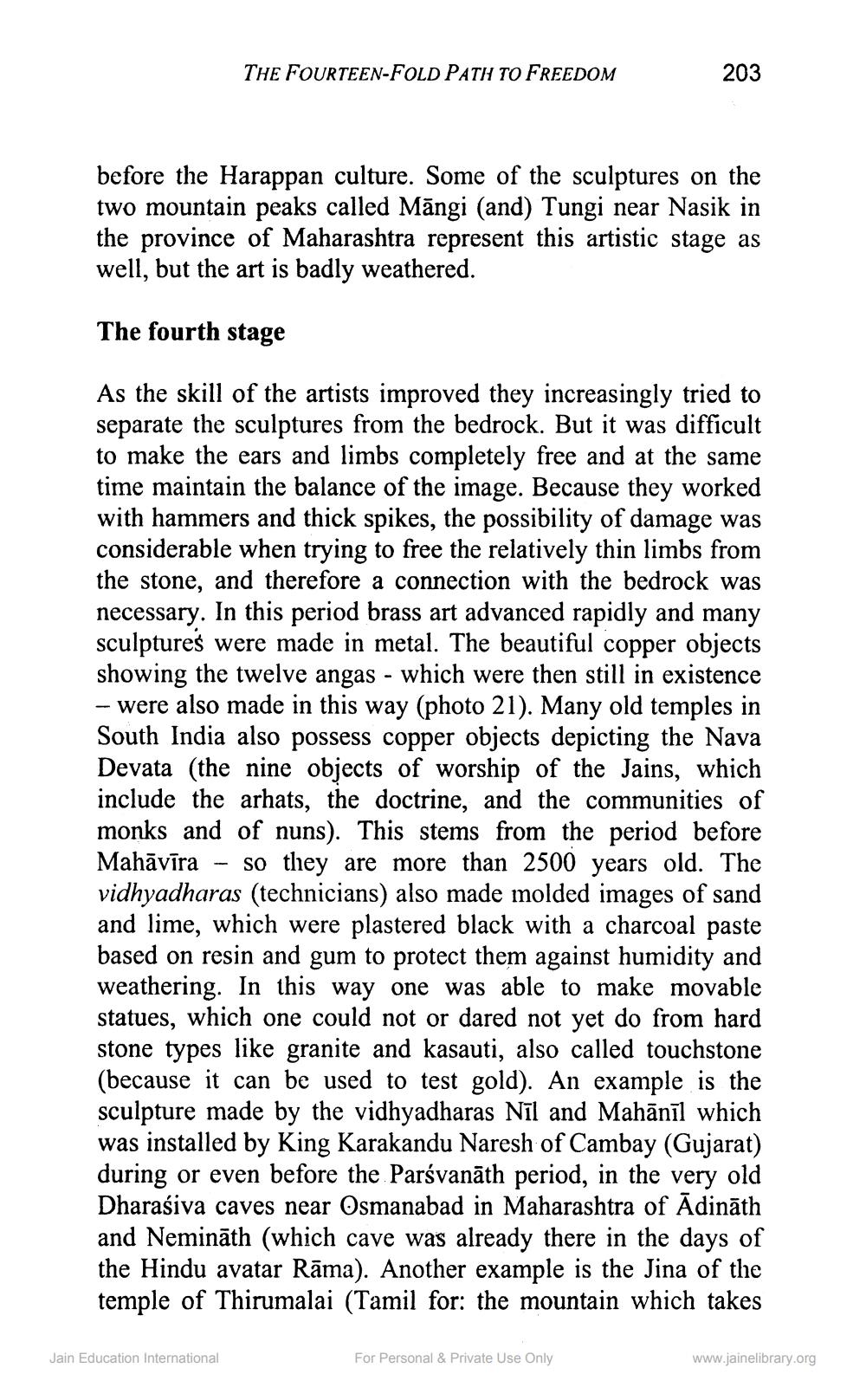________________
THE FOURTEEN-FOLD PATH TO FREEDOM
203
before the Harappan culture. Some of the sculptures on the two mountain peaks called Māngi (and) Tungi near Nasik in the province of Maharashtra represent this artistic stage as well, but the art is badly weathered.
The fourth stage
As the skill of the artists improved they increasingly tried to separate the sculptures from the bedrock. But it was difficult to make the ears and limbs completely free and at the same time maintain the balance of the image. Because they worked with hammers and thick spikes, the possibility of damage was considerable when trying to free the relatively thin limbs from the stone, and therefore a connection with the bedrock was necessary. In this period brass art advanced rapidly and many sculptures were made in metal. The beautiful copper objects showing the twelve angas - which were then still in existence - were also made in this way (photo 21). Many old temples in South India also possess copper objects depicting the Nava Devata (the nine objects of worship of the Jains, which include the arhats, the doctrine, and the communities of monks and of nuns). This stems from the period before Mahāvīra - so they are more than 2500 years old. The vidhyadharas (technicians) also made molded images of sand and lime, which were plastered black with a charcoal paste based on resin and gum to protect them against humidity and weathering. In this way one was able to make movable statues, which one could not or dared not yet do from hard stone types like granite and kasauti, also called touchstone (because it can be used to test gold). An example is the sculpture made by the vidhyadharas Nīl and Mahānīl which was installed by King Karakandu Naresh of Cambay (Gujarat) during or even before the Parśvanāth period, in the very old Dharaśiva caves near Osmanabad in Maharashtra of Ādināth and Nemināth (which cave was already there in the days of the Hindu avatar Rāma). Another example is the Jina of the temple of Thirumalai (Tamil for: the mountain which takes
Jain Education International
For Personal & Private Use Only
www.jainelibrary.org




